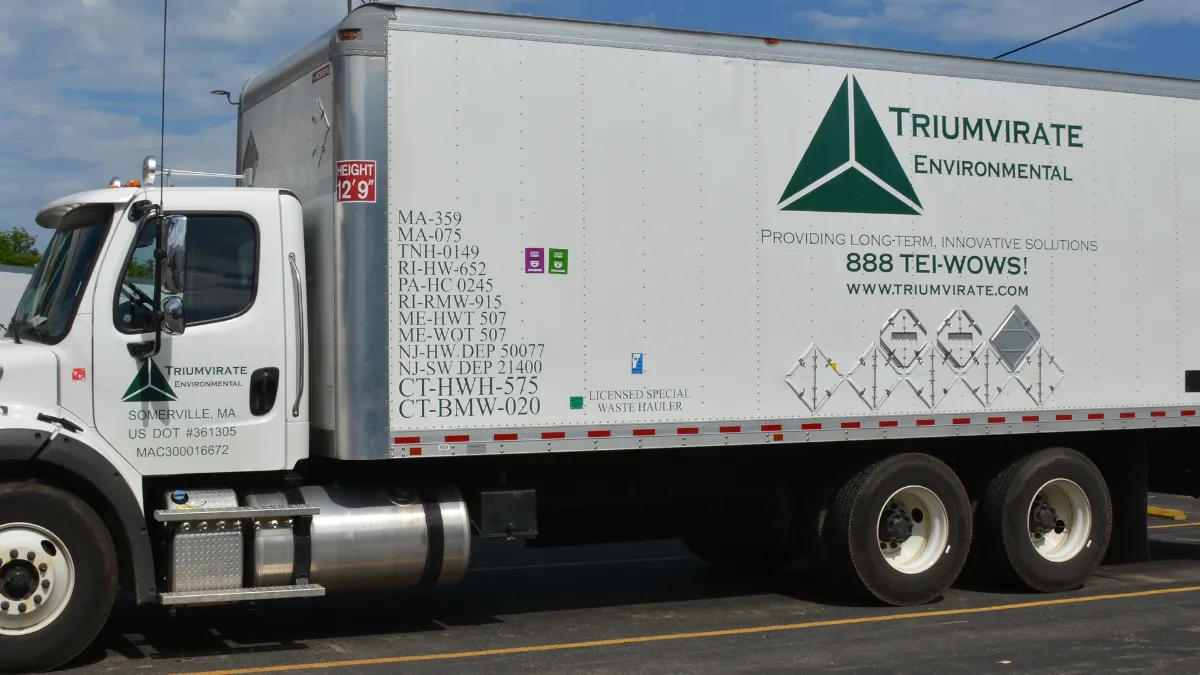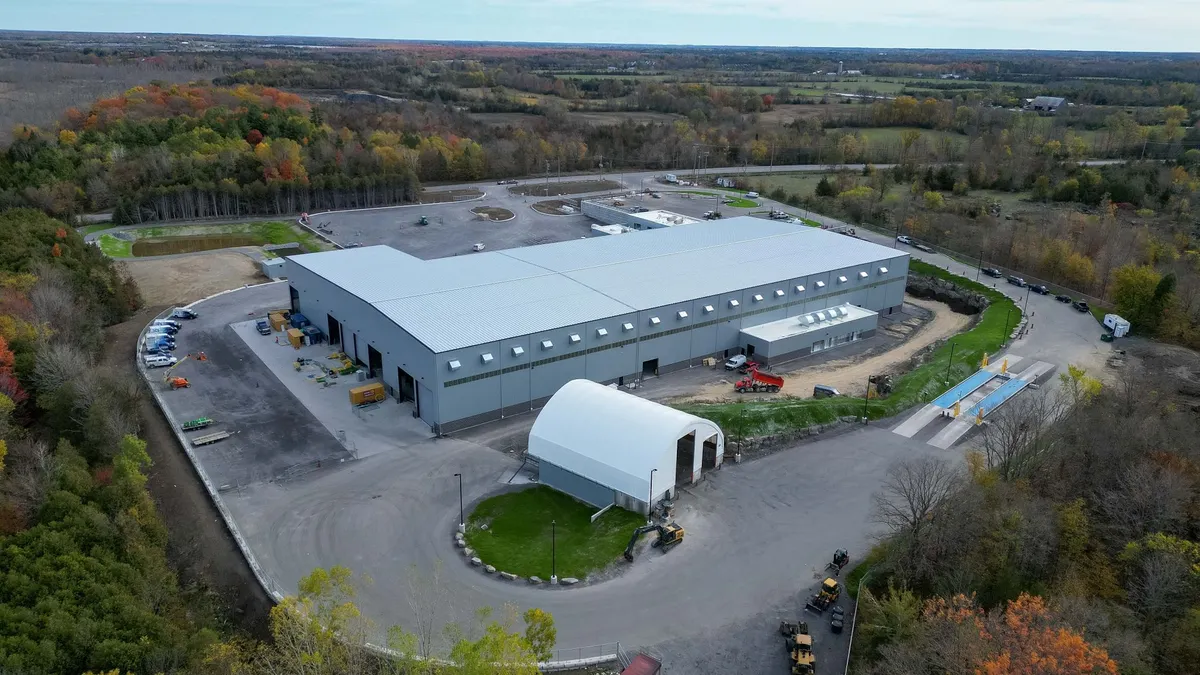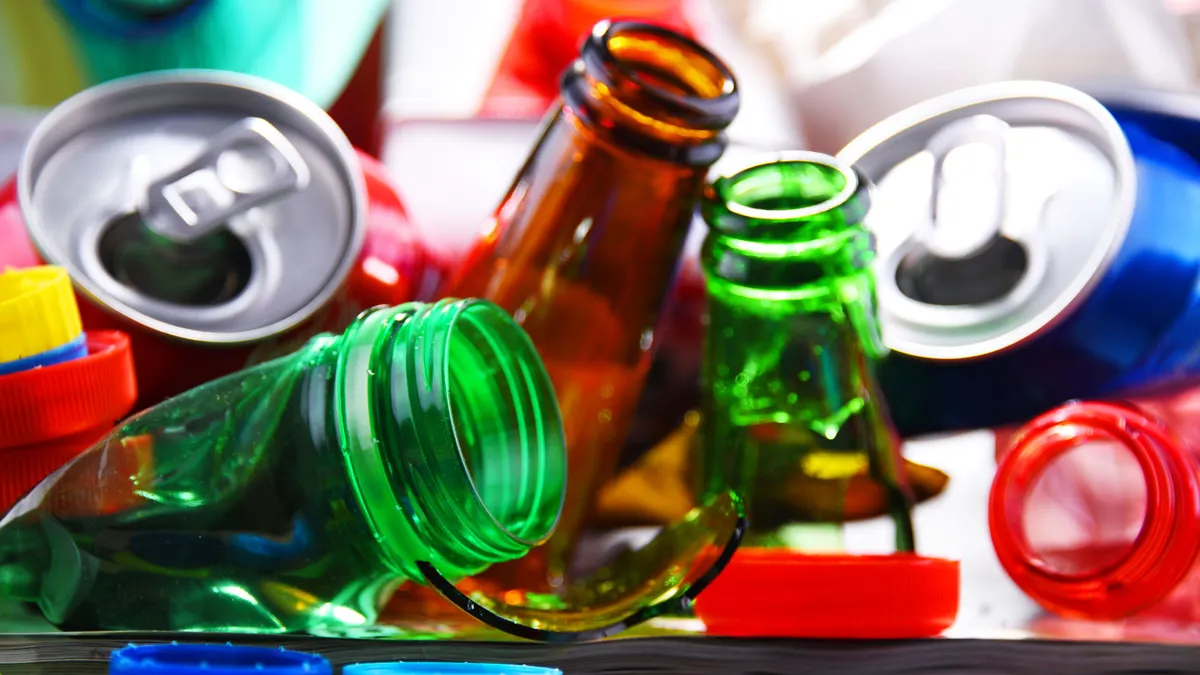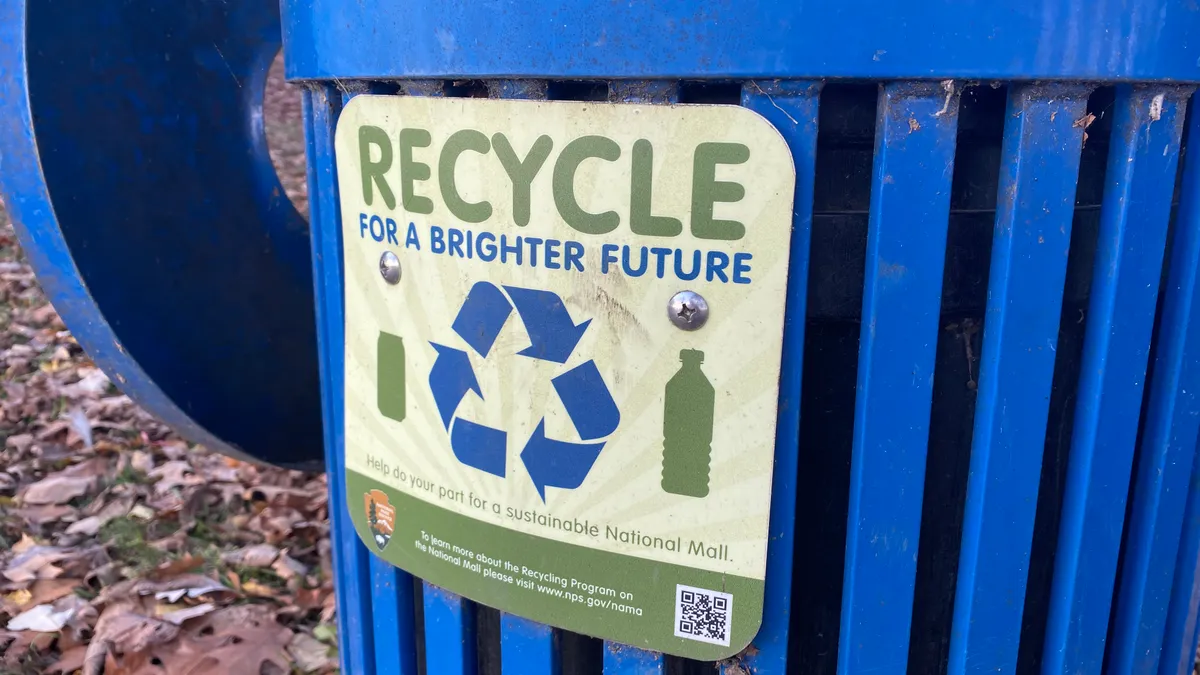Triumvirate Environmental prides itself on taking one of the broadest specifications of regulated waste in the market and has built a sizable business while doing it.
The company, founded in 1988 by CEO John McQuillan, now generates an estimated $500 million in annual revenue. It operates 50 locations in the Caribbean, Mexico, U.S. and Canada, including a range of transfer stations and treatment, storage and disposal facilities.
Triumvirate runs an estimated 500 power units that manage a range of special waste for customers primarily in the life sciences, advanced manufacturing, higher education and hospital sectors. While the company does some site work, McQuillan said it primarily focuses on settings such as clinical labs, research labs, patient care areas, academic spaces and clean manufacturing.
Major international and publicly traded competitors in this area continue to scale through acquisitions, but Triumvirate has also done many deals of its own over the years. The company’s most recent purchase, which closed earlier this summer, was Georgia-based Danox Environmental Services. Danox manages hazardous and non-hazardous waste, including pharmaceuticals.
Another example was the purchase of two businesses that Triumvirate combined to create the BestPlus brand. The company takes mixed plastic, largely from medical and life sciences customers, and can sterilize it as needed. From there, the material is converted into a plastic lumber product. Triumvirate recently touted one example of this product being used at a new community garden near its headquarters in Somerville, Massachusetts.
Waste Dive spoke with McQuillan in June at the company’s office, overlooking a skyline of newly constructed life sciences buildings, about Triumvirate’s role in the industry and what’s next for the business.
This interview has been edited for length and clarity.
WASTE DIVE: The company has grown a lot over the years. What is currently your biggest business line?
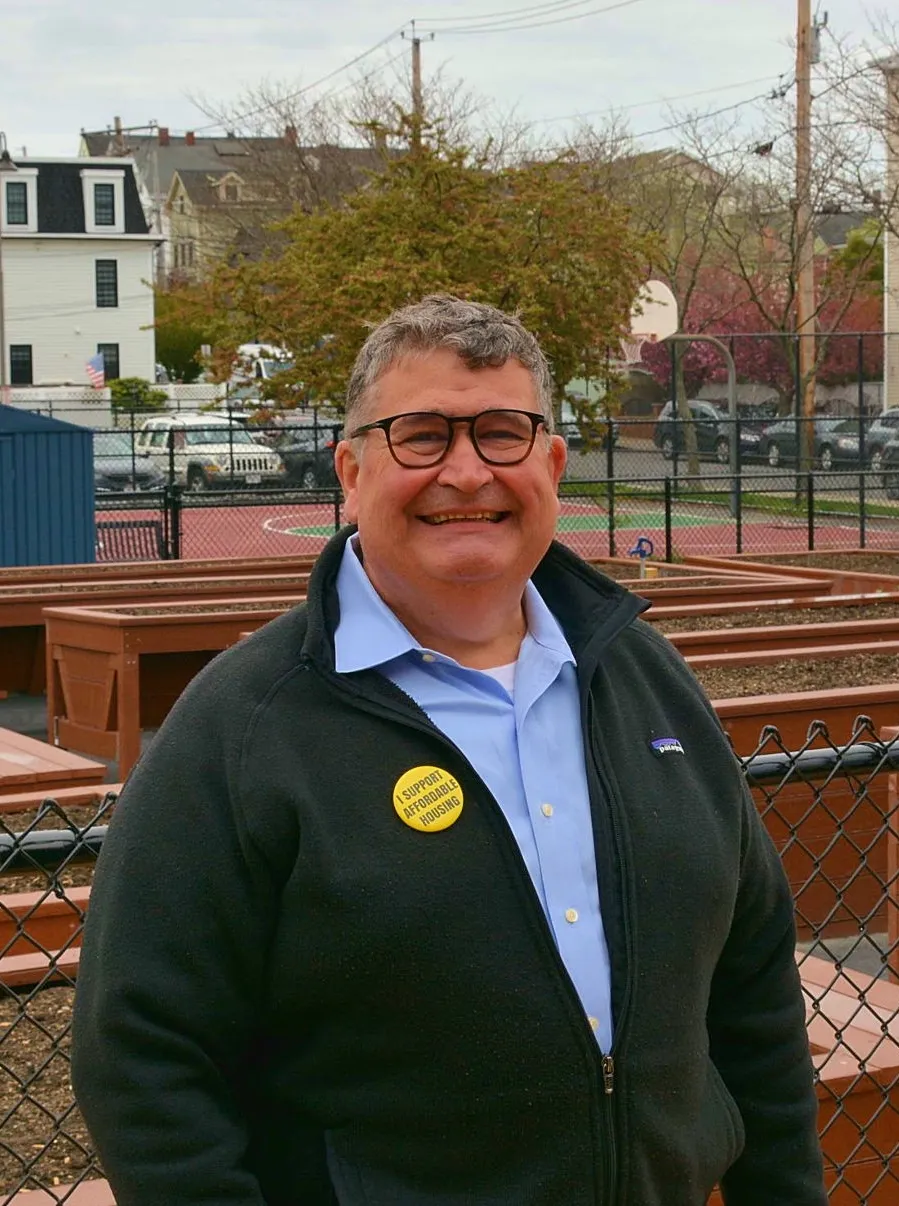
JOHN McQUILLAN: We have two major business lines. The first we call material management. The waste that we handle, for the most part, is special waste — radioactive, explosive, hazardous chemical, infectious medical, drugs that need to be disposed properly or taken back to the manufacturer. So about two-thirds of our revenue is derived from materials management.
The other third of the revenue is derived by something that we call on-site support services and advisory. So we have a consulting practice and we have an in-plant embedded practice. We've got about 400 employees who work at our customers' sites.
Our hook, if you will, is that we are a fully licensed contracting firm capable of managing a broad spec of waste. But we are also an environmental consulting firm. So our customers see the benefit in being able to do advisory and material management under the same roof. It's a more seamless experience for them, the data is resident in one area. I joke that we're in the data business, we just charge by the drum.
As a company that doesn’t have final disposal assets, what’s your approach to competing in the market?
So if your worldview is linear, which is true of most Americans, then final disposal is the omega — either a burial site or an incinerator. If your view of the world is more circular, sort of more European, then the end disposal that we have really is ending up in backyards [in the form of plastic lumber]. It's ending up on the shelves of box stores. It's ending up as a utility for contractors.
Or in the case of oil, we have exposure to the oil recycling market. So we will blend waste oil into a usable fuel. We'll also blend waste flammable liquids and waste flammable solids into fuel that can be consumed by cement manufacturers. Cement making is about the most energy intensive industry on the planet. So what we do is we allow these cement makers to supplant fossil fuels like coal, petroleum coke, natural gas.
How did you enter the plastic lumber business?
We bought a medical waste sterilization business that was a subtenant in an enormous World War II-era hanger that was in suburban Pittsburgh. And then we bought a second business that was in the plastic lumber manufacturing business in Northern Ontario.
We moved the Northern Ontario business down to Pittsburgh and we bolted the plastic lumber making on back of the medical waste sterilization business.
In doing so, we needed more room. So we wound up buying the building where the medical waste operation was. We've now scaled up to something that employs more than 100 people, and we sold 1 million pounds of finished goods last month. We did about 12 million pounds last year, and we're on target to do about 15 million pounds this year.
You’ve talked about expanding to other sites in the past. Is that still a possibility?
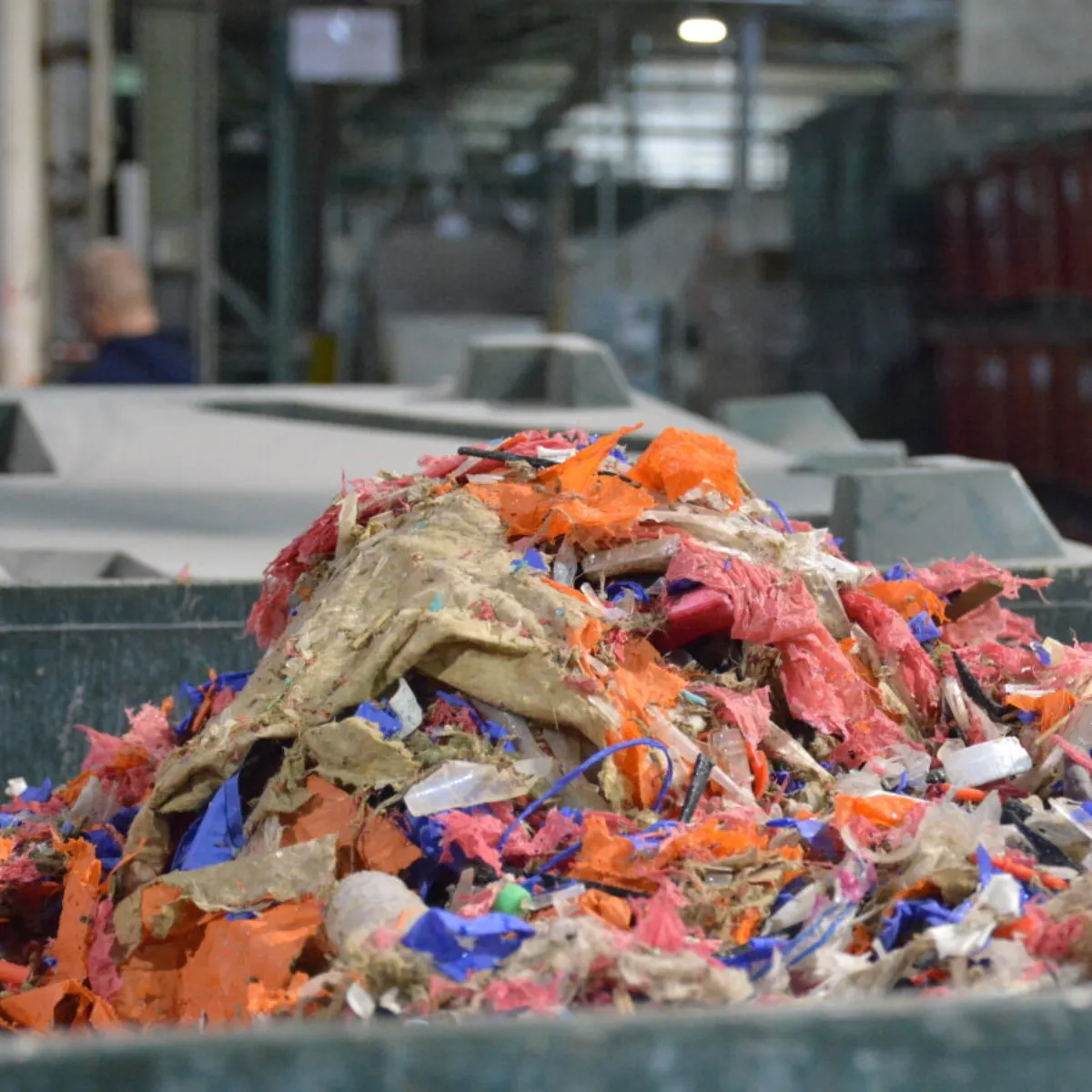
We are serving customers from this one site [in Pennsylvania] as far away as the four corners of the lower 48 states. So we have customers shipping waste to us from from the Bay Area. And we have people purchasing finished goods from us in Arizona, Texas, Florida, New England.
So the logistics, as you can imagine, are expensive if you only have a single plant. But the plants themselves are expensive. We've got about $70 million of invested capital in the Pittsburgh plant.
Customers have approached us and have real interest in doing something on the West Coast. They've got some real interest in doing something in Europe, particularly around the M1 corridor in Dublin. But my thought is that if I were to do another one of these, we would like to partner with someone to do another one. Because for a company this size a $70 million investment is a significant investment. The plant's working well for us. It's working well for our customers. I'd love to do another one.
How does the business model work?
We're a plant that is set up to accept a very broad spec of plastic waste. This is unusual in plastic recycling. The plant itself has all kinds of metal detection magnets, rare earth metal magnets that can pick up non-ferrous.
Depending on where the customer is, what the plastic is, we'll set the pricing. Because there's a logistics component. And then there's how usable the plastic is. The majority of this is something that was a polyolefin — some kind of low density polyethylene, high density polyethylene or some kind of polypropylene. That's really the glue that makes this board a board. And then the impurities are really filler that serve a structural purpose for the board in that it gives it heft.
So we're constantly balancing the breadth of materials that we're bringing in against the quality standards that we need to produce something that can meet a brisk market.
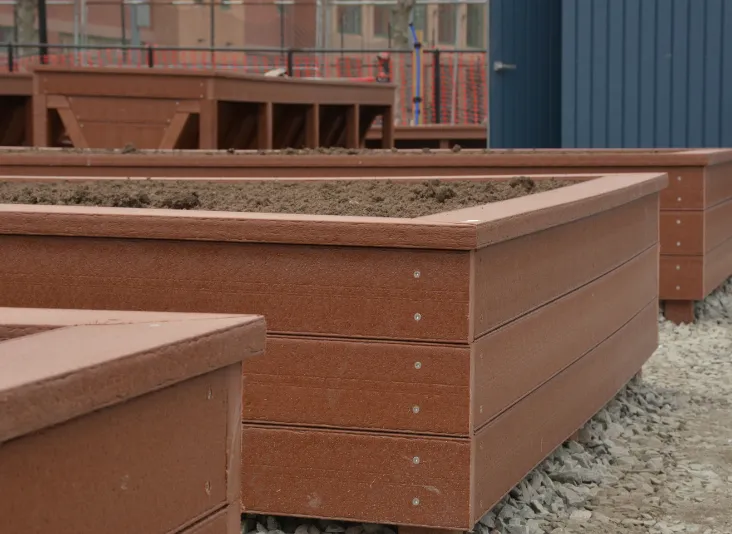
What kind of demand trends are you seeing within your broader customer base?
The average size of our customer has grown enormously. So 10 years ago, we didn't have anybody that paid us more than a million dollars. Today, we have, two or three $20 million customers.
So we've been able to capture the imagination and confidence of very large users of either environmental consulting services, or material management services. The uptake of these large customers is on a pretty steep slope. So increasingly, we are serving larger users. And as a percentage of our total portfolio of accounts, they're a very big piece.
How has inflation affected you in recent years? Some competitors have said this drove them to get more aggressive on pricing.
So I feel that the environment remains inflationary. We've seen inflation in all quarters. We've seen labor inflation, we've seen costs of goods and services are inflating as well. We have great customers, and we have on our team people who are great communicators with our customers. And we have had the ability to very nimbly balance our costs as they increase against our customers' costs.
I've been doing this for the better part of 40 years. So I've seen both inflationary and deflationary environments.
Certain tech companies have done layoffs, and lab demand has gone down in the region. Is that a concern?
A concern? Yes. But in our numbers, no, we haven't seen it. We're a company that has grown very steadily through boom and bust times.
During the great financial crisis we just sort of walked through it. During COVID, we just sort of walked through it. Some of it is we're an essential business service, and this is just something that organizations need to invest in. This is highly regulated work. And we've been the beneficiary of regulations. But as all things go, regulations can cut both ways. Increased regulation also increases our costs.
The environmental services industry is going through another round of consolidation. How do you see this affecting competition with some of the bigger companies?
I think we've been the beneficiary of consolidation. The industry has been consolidating since I started. We've done 21 acquisitions in the last 20 years. And we've seen multiples that are being paid for these kinds of companies go up; multiples for the highest quality companies go way up. So it has become competitive. Private equity found their way into this space maybe eight to 10 years ago. And that's added to some of the competitive nature of the consolidation.
What’s next for Triumvirate?
Some people think of recycling as a monolithic activity. But we look at recycling as taking down a fraction of the waste stream that really lends itself to the full life cycle of recycling, including finding a buyer.
So if you have care, custody and control of as much waste as we do, and as broad a spectrum of waste as we do, you have to fall in love with incrementalism. And you have to see recycling as a journey that happens over a long, long period of time.
What you can expect out of Triumvirate Environmental in the future is for us to continue to look across a very heterogeneous fraction of waste and to solicit ideas from our team as to which of those fractions will be the next to take down to turn into a recycled product.


